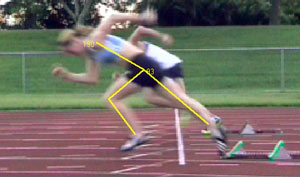Gravity
Acceleration of an implement while in flight is constant and always -9.8 meters/second squared or 32 ft/s2 (feet per second squared); the act of gravity on the implement. Therefore, generally all objects fall to the earth at the same rate of acceleration, no matter how much they weigh.
The force of gravity is always acting vertically; there is no horizontal deceleration in the absence of aerodynamic forces. Acceleration is the same regardless of the weight of the implement. Therefore, the vertical velocity of a projectile decreases by 9.8 m/s every second.
Calculating and Measuring Acceleration
Acceleration (a) is defined by the following formula, where dv=change in velocity and dt=change in time.
a=dv/dt
The change velocity is the difference between the current value and the last value of the velocity, or, the change in velocity is equal to the final velocity minus the initial velocity (dv=vf-vi).
Related Pages
- More Physics of Sport


 Current Events
Current Events